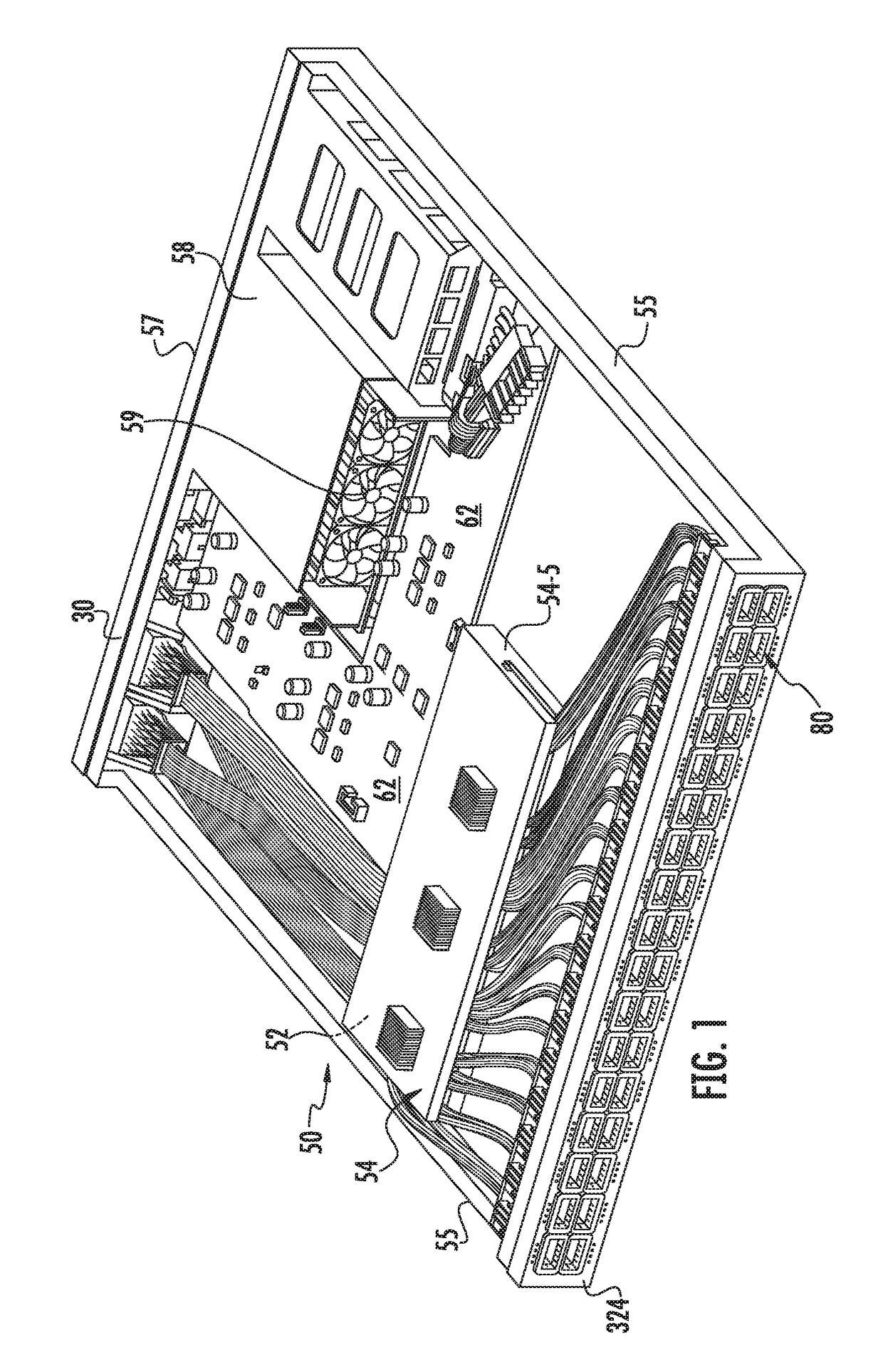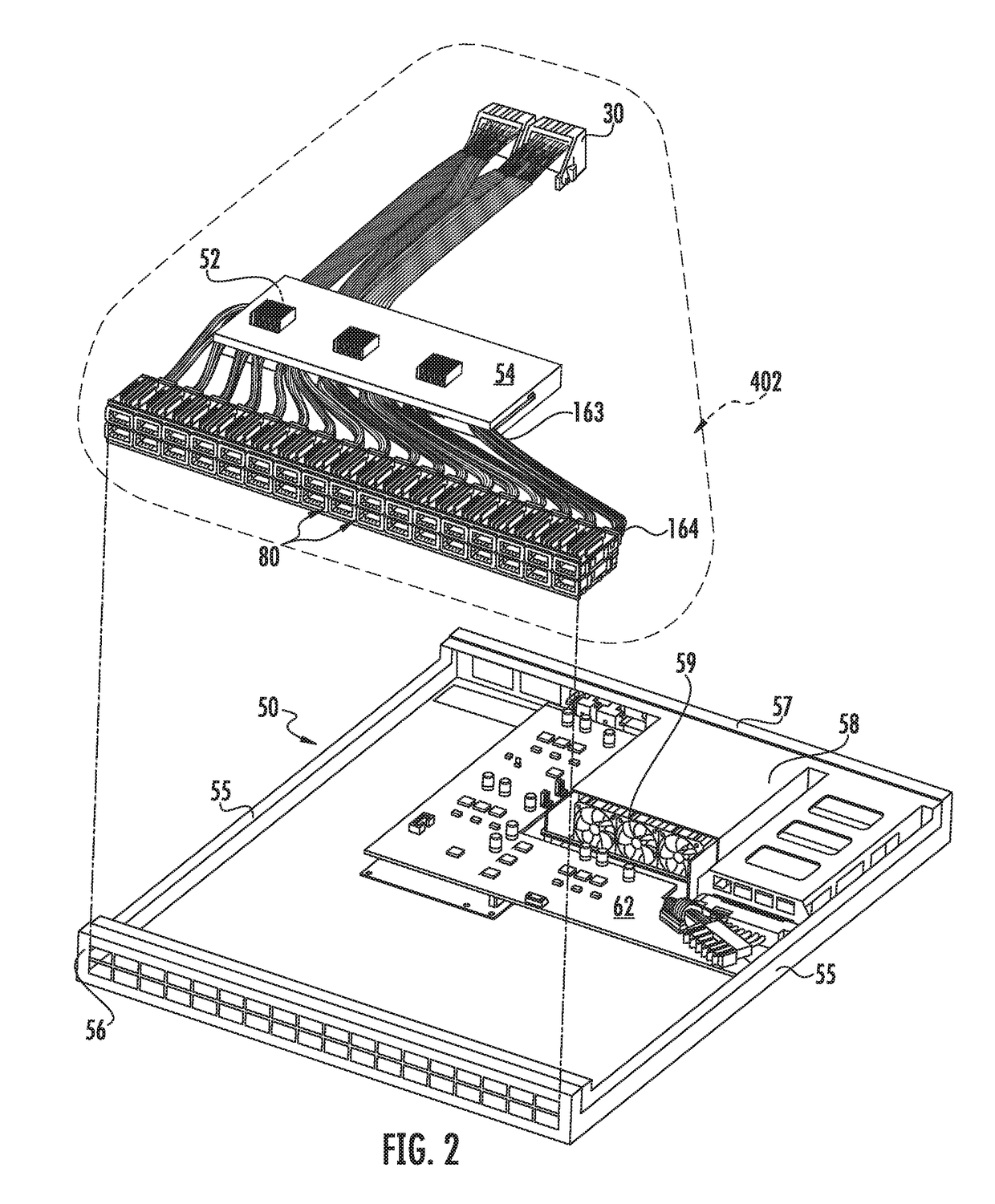Circuit board bypass assemblies and components therefor
a circuit board bypass and circuit board technology, applied in the direction of coupling device connection, support structure mounting, instruments, etc., can solve the problems of reducing affecting so as to improve the emi performance of the connector port, remove the problem of signal integrity and impedance discontinuity, and create noise and impedance problems
- Summary
- Abstract
- Description
- Claims
- Application Information
AI Technical Summary
Benefits of technology
Problems solved by technology
Method used
Image
Examples
Embodiment Construction
[0080]The detailed description that follows describes exemplary embodiments and is not intended to be limited to the expressly disclosed combination(s). Therefore, unless otherwise noted, features disclosed herein may be combined together to form additional combinations that were not otherwise shown for purposes of brevity.
[0081]Accordingly, there is provided herein, an improved connector for use in a connector port that is connected directly to cables or wires, rather than traces on circuit boards to define signal transmission lines from the connector and directly to chips and processors of the host device, which are useful for high speed data applications at 10 Gbps and above and with low loss characteristics. Accordingly, the Present Disclosure is therefore directed to connectors and connector assemblies that are suitable for use in free standing external connector ports and which are directly connected to device components by cables, rather than use traces on circuit boards. The...
PUM
 Login to View More
Login to View More Abstract
Description
Claims
Application Information
 Login to View More
Login to View More - R&D
- Intellectual Property
- Life Sciences
- Materials
- Tech Scout
- Unparalleled Data Quality
- Higher Quality Content
- 60% Fewer Hallucinations
Browse by: Latest US Patents, China's latest patents, Technical Efficacy Thesaurus, Application Domain, Technology Topic, Popular Technical Reports.
© 2025 PatSnap. All rights reserved.Legal|Privacy policy|Modern Slavery Act Transparency Statement|Sitemap|About US| Contact US: help@patsnap.com



